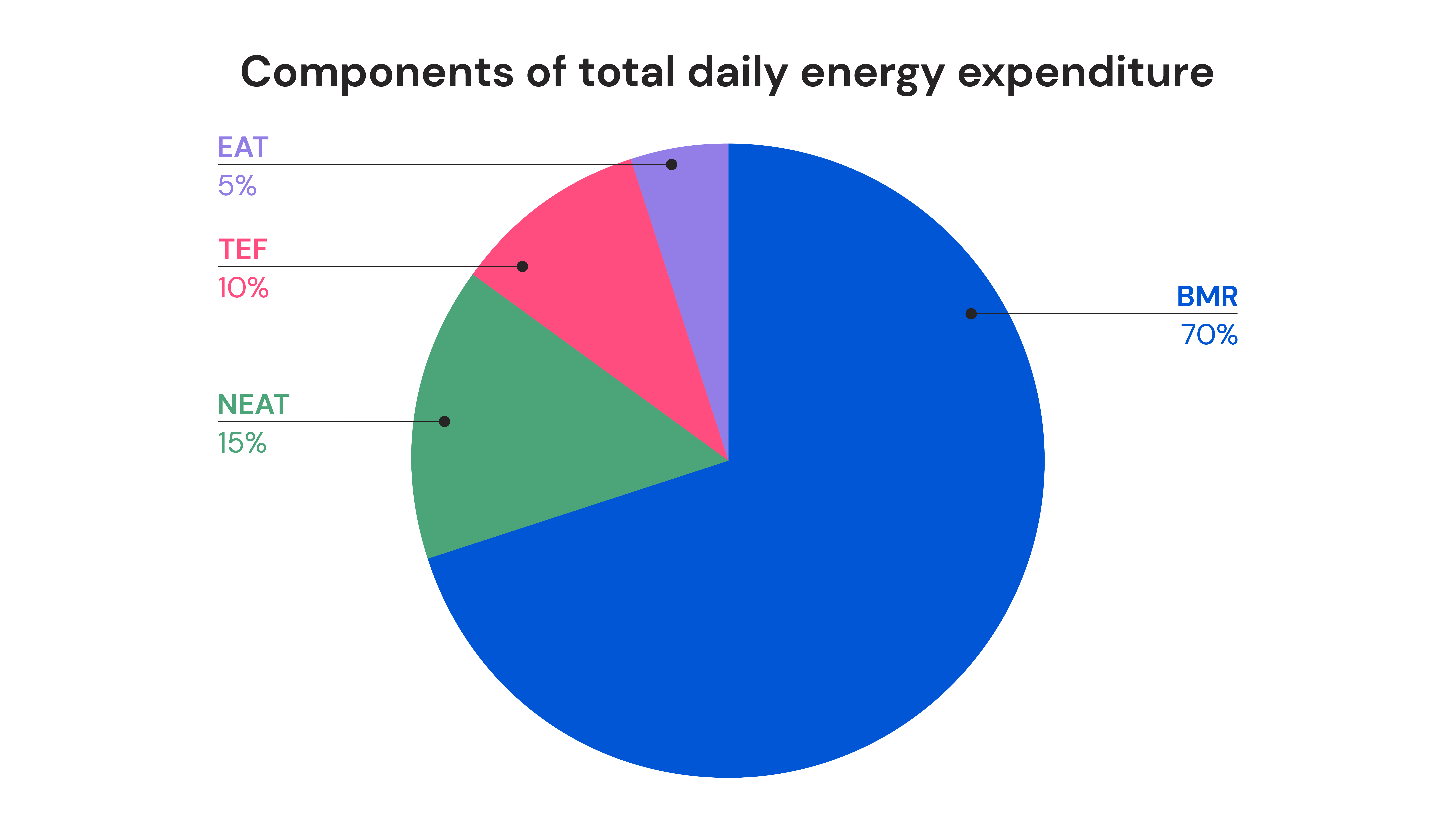Total daily energy expenditure (TDEE) describes the total number of Calories you burn in a given day.
TDEE is made up of four components:
Basal Metabolic Rate (BMR): This describes the energy required to simply keep your body “on,” at rest, assuming you lay in bed all day without moving or eating. It accounts for ~70% of TDEE in the general population.
Thermic Effect of Feeding (TEF): This describes the energy used in the process of eating, digesting, metabolizing, and storing food. It accounts for ~10% of TDEE in general population
Exercise Activity Thermogenesis (EAT): This describes the energy used during structured, intentional exercise. It accounts for about 5% of TDEE for most people, though it could account for more than 20% of TDEE for serious athletes.
Non-Exercise Activity Thermogenesis (NEAT): This describes the energy used for any movement that isn’t purposeful exercise. This would include walking around your school or office, doing yard work, taking out the trash, and even fidgeting in your chair. It typically accounts for about 15% of TDEE, but this percentage could be considerably higher or lower, largely depending on your primary mode of transportation, and whether you have an active or sedentary job.

The approximate relative contributions of basal metabolic rate (BMR), thermic effect of feeding (TEF), exercise activity thermogenesis (EAT), and non-exercise activity thermogenesis (NEAT) to total daily energy expenditure in the general population
You have some magnitude of resting energy expenditure every single day, no matter what. On a typical day, you also do some activities of daily living (which contribute to NEAT), consume some food (which contributes to TEF), and you might also do some structured exercise (which contributes to EAT). If you knew the true energy cost of each category of energy expenditure, you could calculate your total daily energy expenditure by summing the values.
If you consistently log your food and weight in MacroFactor, the app will keep track of your expenditure estimate for you. Our deterministic calculation based on your Calorie intake and change in trend weight provides a more accurate expenditure estimate than static calculators or wearables. Understanding your personal expenditure not only helps you better understand your body, it also allows MacroFactor to recommend and appropriately adjust Calorie and macro targets for you based on your goals.
Learn more about how MacroFactor calculates expenditure here. You might also enjoy this knowledge base article about interpreting changes to your expenditure. Finally, you might also enjoy this article discussing why MacroFactor doesn't need data about energy expenditure during exercise to accurately estimate your total energy needs.
Now that you understand TDEE, you might enjoy one of these articles next:
How Should I Interpret Changes to my Energy Expenditure?
How Does MacroFactor Make Adjustments For a Weight Gain or Weight Loss Goal?